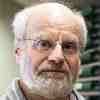Communications of the ACM
Refine your search:
From BLOG@CACM
Forced Labor at Bührle's Arms Factory
As has only recently become known, forced labor occurred at a former Bührle textile factory in Toggenburg, Switzerland. This and other Bührle companies played a...
From BLOG@CACM
The Mesm: Ukraine Beats Russia
The Mesm is considered the first stored program digital computer in Continental Europe.
From BLOG@CACM
Leonardo Torres Quevedo, a Brilliant but Forgotten Spanish Inventor
Although far ahead of his time, in the German- and English-speaking countries, Torres Quevedo has been largely forgotten.
From BLOG@CACM
Promoting Economic Development through Technical Innovation
A wealth of information about the history of technology and industry.
From BLOG@CACM
The Calculating Machine from the Concentration Camp
The story of Viennese engineer Curt Herzstark and the world's smallest mechanical calculating machine, the Curta.
From BLOG@CACM
Original Roman Pocket Calculators are Extremely Rare
As far as we know, only three or four original specimens of the Roman hand abacus have survived.
From BLOG@CACM
Patent Protection in Europe
Up to the second half of the 19th century —with the exception of the industrial power Great Britain—the protection of inventions was inadequate and strongly disputed...
From BLOG@CACM
Computers Were Originally Humans
Until the middle of the 20th century, computers were in fact humans who performed calculations.
From BLOG@CACM
How Does One Divide with Napier's Rods?
Napier's multiplication and division rods, deriving from the basic multiplication table, simplify calculations considerably.
From BLOG@CACM
How Does One Multiply with Napier's Rods?
Napier's multiplication and division rods, deriving from the basic multiplication table, simplify calculations considerably.
From BLOG@CACM
How Does One Calculate With A Circular Slide Rule?
The circular slide rule was widely used until the 1970s.
From BLOG@CACM
The Evolution of Computing Power in Switzerland
Milestones in the history of computing from the Swiss National Supercomputing Center, Lugano.
From BLOG@CACM
Soresini: A Very Rare Book on the History of Computing
The work is an extremely instructive, rich history of calculating technology. It also includes the analog world and automata, and is written in Italian.
From BLOG@CACM
Charles Babbage and the Loom
Babbage wanted to control his analytical engine, regarded as the ancestor of the modern-day computer, with punched cards.
From BLOG@CACM
The World's Most Magnificent Historical Calculating Machines
The design of today's electronic computers is usually not very appealing, in contrast to magnificent mechanical calculating machines from earlier times.
From BLOG@CACM
The World's Most Magnificent Historical Automatons
Automatons are ubiquitous. Some of the most magnificent works in the genre have survived in museums.
From BLOG@CACM
Konrad Zuse's Guestbook: a Treasure Trove
Computer scientist Konrad Zuse created the world's first programmable computer, the functional program-controlled Turing-complete Z3.
From BLOG@CACM




